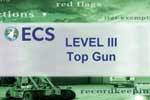Table of Content
1 Preface
2 Scope and Methodology
2.1 Objectives of the Study
2.2 Stakeholders
2.3 Data Sources
2.3.1 Primary Sources
2.3.2 Secondary Sources
2.4 Market Estimation
2.4.1 Bottom-Up Approach
2.4.2 Top-Down Approach
2.5 Forecasting Methodology
3 Executive Summary
4 Introduction
4.1 Overview
4.2 Key Industry Trends
5 Global Aerospace and Defense Telemetry Market
5.1 Market Overview
5.2 Market Performance
5.3 Impact of COVID-19
5.4 Market Breakup by Technology
5.5 Market Breakup by Equipment
5.6 Market Breakup by Application
5.7 Market Breakup by Sector
5.8 Market Breakup by Region
5.9 Market Forecast
6 Market Breakup by Technology
6.1 Radio Telemetry
6.1.1 Market Trends
6.1.2 Market Forecast
6.2 Satellite Telemetry
6.2.1 Market Trends
6.2.2 Market Forecast
7 Market Breakup by Equipment
7.1 Data Acquisition Unit
7.1.1 Market Trends
7.1.2 Market Forecast
7.2 Telemetry Transmitters
7.2.1 Market Trends
7.2.2 Market Forecast
7.3 Flight Termination Receivers
7.3.1 Market Trends
7.3.2 Market Forecast
7.4 Others
7.4.1 Market Trends
7.4.2 Market Forecast
8 Market Breakup by Application
8.1 Aircraft
8.1.1 Market Trends
8.1.2 Market Forecast
8.2 Spacecraft
8.2.1 Market Trends
8.2.2 Market Forecast
8.3 UAVs
8.3.1 Market Trends
8.3.2 Market Forecast
8.4 Missiles
8.4.1 Market Trends
8.4.2 Market Forecast
8.5 Guided Weapons
8.5.1 Market Trends
8.5.2 Market Forecast
8.6 Others
8.6.1 Market Trends
8.6.2 Market Forecast
9 Market Breakup by Sector
9.1 Aerospace
9.1.1 Market Trends
9.1.2 Market Forecast
9.2 Defence
9.2.1 Market Trends
9.2.2 Market Forecast
10 Market Breakup by Region
10.1 North America
10.1.1 Market Trends
10.1.2 Market Forecast
10.2 Europe
10.2.1 Market Trends
10.2.2 Market Forecast
10.3 Asia Pacific
10.3.1 Market Trends
10.3.2 Market Forecast
10.4 Middle East and Africa
10.4.1 Market Trends
10.4.2 Market Forecast
10.5 Latin America
10.5.1 Market Trends
10.5.2 Market Forecast
11 SWOT Analysis
11.1 Overview
11.2 Strengths
11.3 Weaknesses
11.4 Opportunities
11.5 Threats
12 Value Chain Analysis
13 Porters Five Forces Analysis
13.1 Overview
13.2 Bargaining Power of Buyers
13.3 Bargaining Power of Suppliers
13.4 Degree of Competition
13.5 Threat of New Entrants
13.6 Threat of Substitutes
14 Price Analysis
15 Competitive Landscape
15.1 Market Structure
15.2 Key Players
15.3 Profiles of Key Players
15.3.1 BAE Systems plc
15.3.2 Lockheed Martin Corporation
15.3.3 L3 Technologies, Inc.
15.3.4 Safran
15.3.5 Cobham
15.3.6 Honeywell
15.3.7 Thales Group
15.3.8 Kongsberg Gruppen
15.3.9 Orbit Communications Systems
15.3.10 Dassault Aviation
15.3.11 Curtiss-Wright
15.3.12 Leonardo
15.3.13 Raytheon
15.3.14 AstroNova



